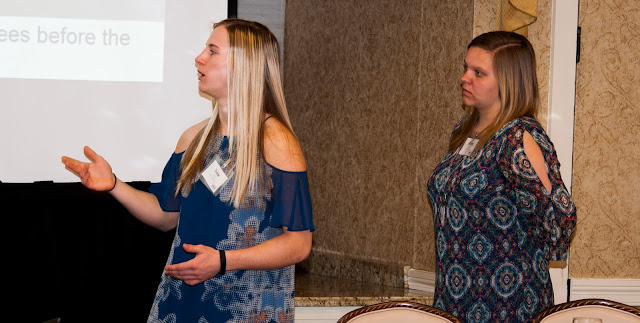Guest Blog: Service Learning that Promotes Student Agency
by Sharon Smogor, Social Studies Teacher, Carmel Catholic High School, DSN Advisory Council Member
Service learning can have many different faces, as aptly demonstrated by a presentation team of teachers and students, in a session entitled “Service Learning that Promotes Student Agency” at this year’s Democracy Schools Annual Convening on Friday, March 10th. Grisel Granados, AP Spanish teacher at Carmel Catholic High School; Jamie Nash-Mayberry, Social Studies teacher at Shawnee High School; and Drew McLane and Abbey Livesay, Seniors at Shawnee High School related details of projects that they have been involved in that promote student voice and students acting as agents of change.
The Shawnee project on “Saving the Levees” has been in place for about 7 years and draws attention to the failing levees in the area. It has become a centerpiece of service leaning and student voice to the extent that the middle school students look forward to continuing the work. The Carmel Catholic project, which is in its pilot stage, involved AP Spanish Language and Culture students exploring global issues of poverty and education. Students took action through creating public service announcements and writing letters to government officials.
In both cases, teachers helped the students choose an authentic cause in the community that students were passionate about and were willing to commit to developing short and long term goals and strategies. The importance of preparation for the project was emphasized; towards this goal, students participated in team building exercises and question framing before beginning their research. Collaboration was also an essential ingredient in both projects. Students did the research, contacted community members, created their action plans and—very importantly--took ownership of their project. Students engaged in reflection at every step of the project, thus cementing the learning. In addition, students learned some very practical skills: how to use the media, how to contact and interact with members of the community, how to work with a team, and how to resolve conflict.
Their projects also offered great potential for cross curricular learning. For example, the Shawnee students worked with the Science department on research as well as other groups at school for marketing and publicity. The Carmel students worked with a few government/civics classes and conducted a model senate simulation using "bills" they created that were related to the topic of poverty and education and supported the outreach to government officials.
As shown by these two schools, service learning is an excellent vehicle for effective civic education and engagement across the curriculum, especially when supported by the school mission and culture.





Comments
Post a Comment